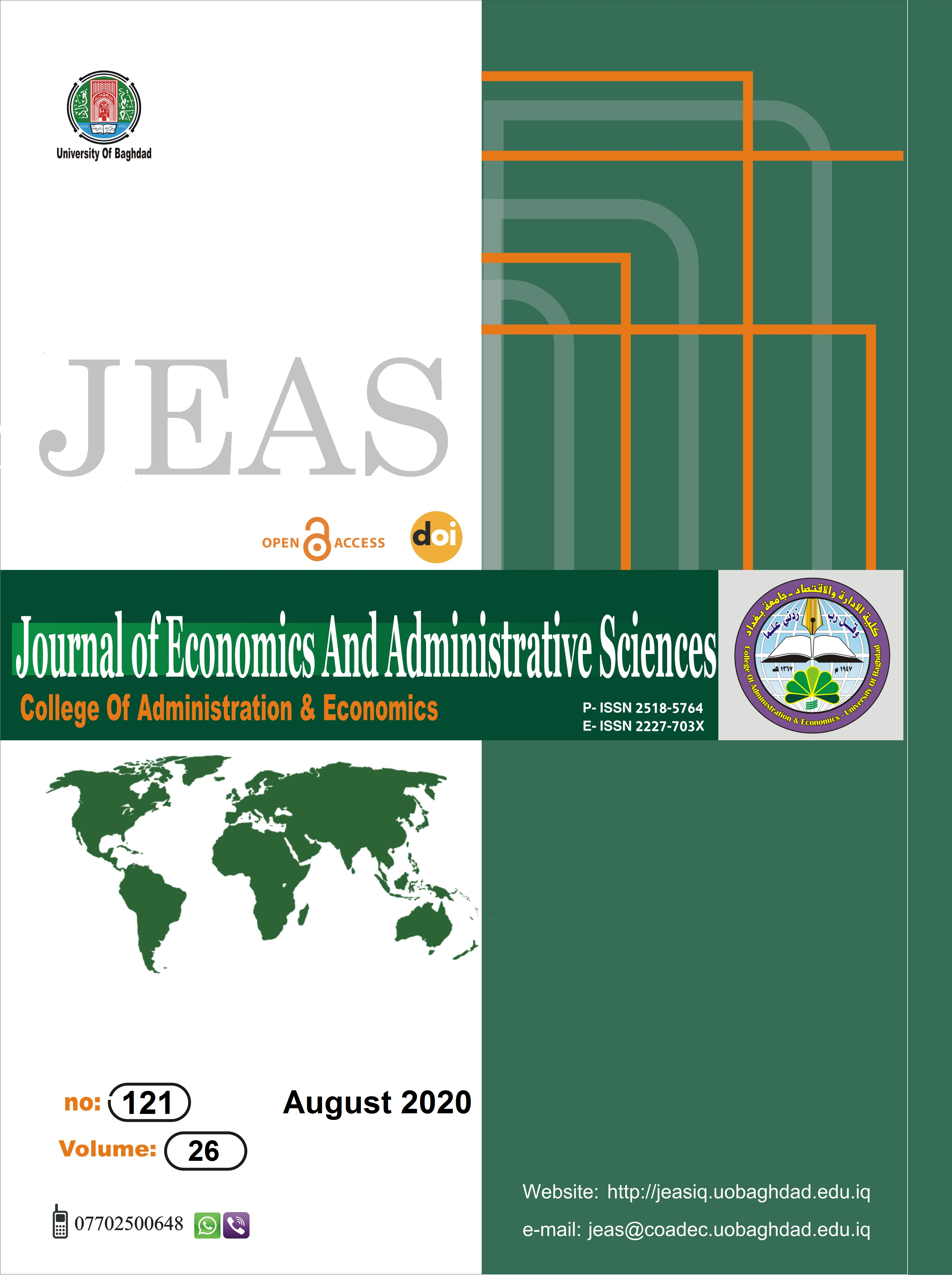Practices of marketing deception and its impact on organizational reputation / applied research in the relics of Baghdad
DOI:
https://doi.org/10.33095/jeas.v26i121.1939Keywords:
marketing deception, organizational reputation., الخداع التسويقي , السمعة التنظيمية.Abstract
The research aims to enrich the subject of marketing deception, which is still in the concept stage at the level of the research sample and to allow future researchers to contribute to addressing the concept of marketing deception and linking it with other variables. The research problem is that is there a correlation between marketing deception and organizational reputation in Baghdad assets. What is the reflection of marketing deception on the organizational reputation in the assets of Baghdad? The research is concerned with shedding light on the reputation of the organization in terms of frequency of purchase, place of purchase, brand loyalty, and knowing the impact of marketing deception on these factors. This importance comes from the differences in the organization’s ability to absorb such practices and to know how the organization will behave with regard to these products after realizing the extent of deception in them. The aim of the research is to test the relationship between marketing deception and the organization’s reputation for assets and to measure the extent of the organization’s acceptance of these products. For these practices, and to contribute to the development of the vision of the stores and the responsible authorities of the concept of marketing deception and its effects on customers. The research was based on the method of analytical survey. The research sample targeted (364) stores exclusively within the capital, Baghdad. The main tool for the research was the questionnaire as well as the design of models prepared for the interviews based on a set of sober global standards for the research variables after they were adapted to the needs of the Iraqi environment. The hypotheses were tested and the data analyzed using appropriate statistical tools. The Bartlett-Test scale was used, Cronbach's Alpha coefficient was used to measure the level of internal consistency of the parameters and dimensions of the scale to ensure the reliability of the scale. The arithmetic mean, standard deviation, coefficient of variation, significance and precedence ratio of the paragraphs adopted in the scale questionnaire and its dimensions were relied on, and the five-year Likert scale was used for the research sample, and the research hypotheses were tested, which is the hypothesis of correlation, influence and significant differences of the research sample, the most prominent conclusions of the research showed the results of the description The diagnosis of the organizational reputation variable is that the valuation of assets and companies is at a good level, meaning that there are some of them with a good organizational reputation, and this does not include those stores and companies that have been subjected to marketing deception and were high-performance and aware of social responsibility and of high attractiveness to customers and provide high quality products in whole or in part within the value chain From companies to the final consumer, the most prominent recommendations are that Al-Makhir should have a database on companies, pharmaceutical products, and alternatives from the industries of competing companies that can be used in their field of work to differentiate between alternative products and companies' offers.
Downloads
Published
Issue
Section
License

This work is licensed under a Creative Commons Attribution-NonCommercial-NoDerivatives 4.0 International License.
Articles submitted to the journal should not have been published before in their current or substantially similar form or be under consideration for publication with another journal. Please see JEAS originality guidelines for details. Use this in conjunction with the points below about references, before submission i.e. always attribute clearly using either indented text or quote marks as well as making use of the preferred Harvard style of formatting. Authors submitting articles for publication warrant that the work is not an infringement of any existing copyright and will indemnify the publisher against any breach of such warranty. For ease of dissemination and to ensure proper policing of use, papers and contributions become the legal copyright of the publisher unless otherwise agreed.
The editor may make use of Turtitin software for checking the originality of submissions received.


























